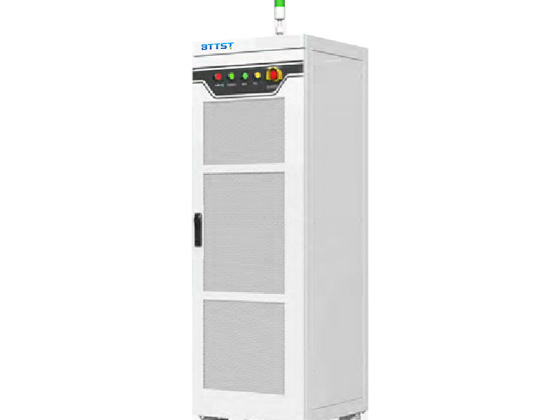
Battery PACK charging and discharging system
The main roles of a battery pack charging and discharging system include energy storage, intelligent charging and discharging, protection of the battery, and optimization of battery performance and life.
- Information
Voltage range | 30V~500V/1000V | 60V~1500V/2000V |
Current selection | 200A/300A/500A/1000A | |
Power selection | 250KW~600KW | 300KW~1.5MW |
Number of channels per unit | 2CH/4CH/8CH | 2CH/4CH |
Minimum current grading | 100A | |
Voltage/current accuracy | ±0.05%F.S.(Temperature 25 ± 5 ℃) | |
Resolving power | 0.1mV; 0.1mA | |
Charge discharge mode | CC, CV, CP, CC-CV, CR, DCIR pulses, operating conditions, etc | |
Current response time | ≤5ms(Switching time ≤ 10ms) | ≤10ms(Switching time ≤ 20ms) |
Working condition | Support 50ms working condition; ≥ 10 million lines of text; Excel import | Support 100ms working condition; ≥ 10 million lines of text; Excel import |
Parallel connection of channels | Maximum support for parallel connection up to 2000A | |
Efficiency | Charging efficiency: 95%; Feedback efficiency: 94% | |
Minimum recording interval | 10ms | |
The main roles of a battery pack charge/discharge system include energy storage, intelligent charging and discharging, battery protection, and optimization of battery performance and life.
First of all, battery pack charging and discharging systems can realize the integration and management of batteries. By combining multiple individual batteries in series and parallel, they form a whole that can meet specific voltage and capacity requirements. This design not only provides a stable power source for electric vehicles and other equipment to ensure that the equipment can run for a long time, but also provides more powerful and longer-lasting power support in energy storage.
Second, the battery pack charging and discharging system features intelligent charging and discharging. It monitors and manages the battery through a Battery Management System (BMS) to ensure stable and efficient operation in various usage scenarios. the BMS monitors the battery's voltage, current, temperature, and other parameters, and provides equalization charging and overcharge and overdischarge protection when necessary to extend the service life of the battery.
In addition, the battery pack charging and discharging system has a safety protection function. It is usually equipped with a variety of internal protection circuits and devices, such as overcharge protection, overdischarge protection, short-circuit protection, etc., to effectively prevent the battery in the use of the process of abnormalities, to protect the safety of users.
Finally, through reasonable design and management, the battery pack charging and discharging system can optimize the performance and life of the battery. By balancing the charging and discharging states between individual batteries, it reduces the differences between batteries, thus extending the service life of the entire battery pack.




